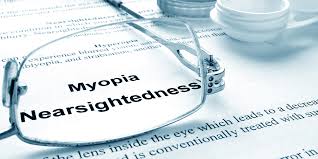 Have you ever wondered how to keep your child’s eyeglass prescription from getting worse? We often hear this question from our patients, especially the parents of our younger patients who are nearsighted (or myopic).
Have you ever wondered how to keep your child’s eyeglass prescription from getting worse? We often hear this question from our patients, especially the parents of our younger patients who are nearsighted (or myopic).
Although we’ve heard this question hundreds of times, we have never had the scientific data to support any treatments…until now! Nearsightedness, or myopia, is a vision condition in which people can see close objects clearly, but objects farther away appear blurry. Myopia occurs if the eyeball is too long or the cornea (which is the clear front part of the eye where a contact lens rests) is too curved. Progressing myopia results from continued elongation of the eyeball that is typically experienced in the growing years of a child. Besides the frustrating aspect of blurry distance vision, increased myopia is associated with many sight-threatening diseases. These diseases include glaucoma, macula issues, retinal detachments just to name a few.
Luckily with today’s technology and new extensive research, we now have methods available to slow the progression of myopia in children. These treatments are crucial to implement at a young age in order to effectively control or slow down the changes in the eye. Our pediatric eye exams can determine if myopia management is appropriate for your child.
Proven treatment includes:
Soft Multifocal contact lenses – Unlike glasses, wearing multifocal contacts creates a peripheral de-focus or “blur” that prevents the eye from elongating.
Diluted Atropine eye drops – These eye drops are to be instilled daily before bed. Many studies have shown the effectiveness of these drops in slowing progression. This allows an alternative for patients that do not want to wear contact lenses and the freedom to continue wearing glasses.
Orthokeratology – This is a hard contact lens worn overnight that gently reshapes the cornea (similar to LASIK but not permanent) in a way that helps correct nearsightedness. The contacts are removed in the morning and the cornea retains its shape throughout the day so patients can see clearly without the need for glasses or contacts.
Lifestyle changes – Studies show that spending roughly 2 hours per day or 10 hours per week in natural, outdoor sunlight can slow the progression of myopia. This allows the eyes to focus on objects at a distance and not continually focusing on near objects (such as books and electronics).
